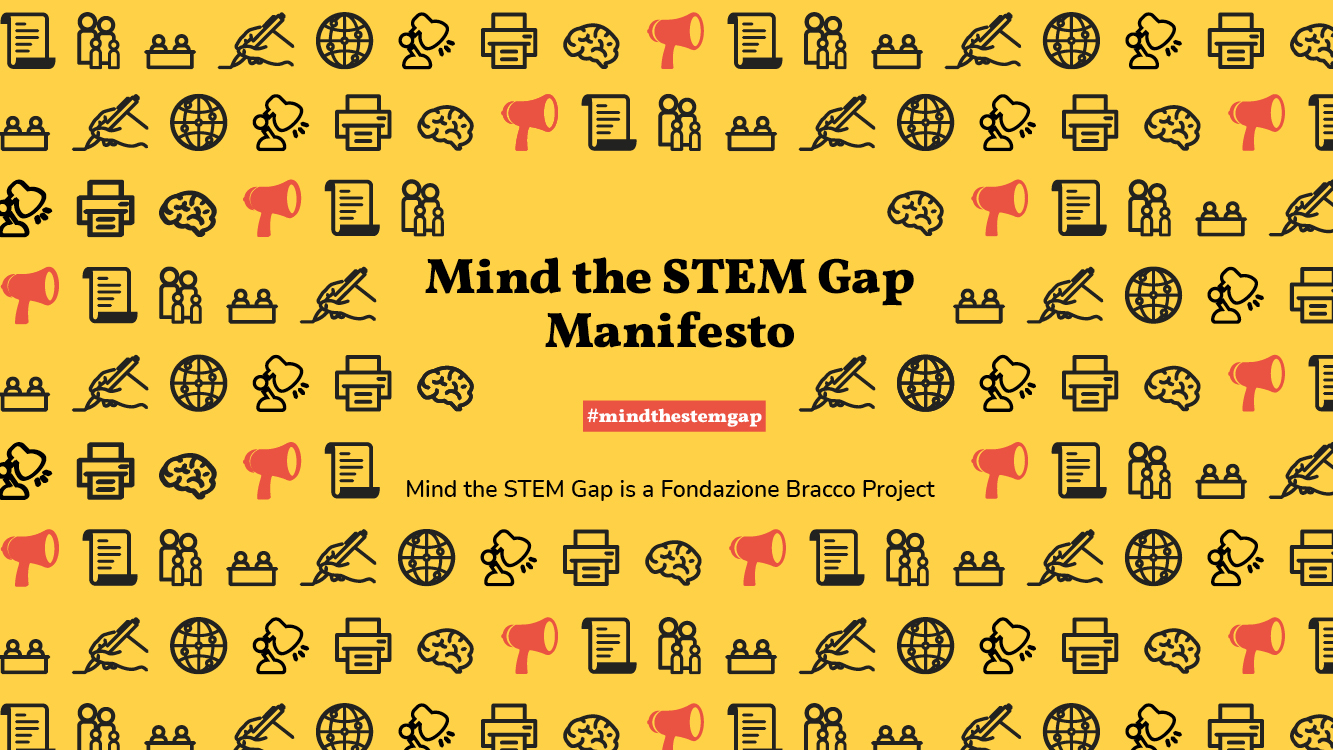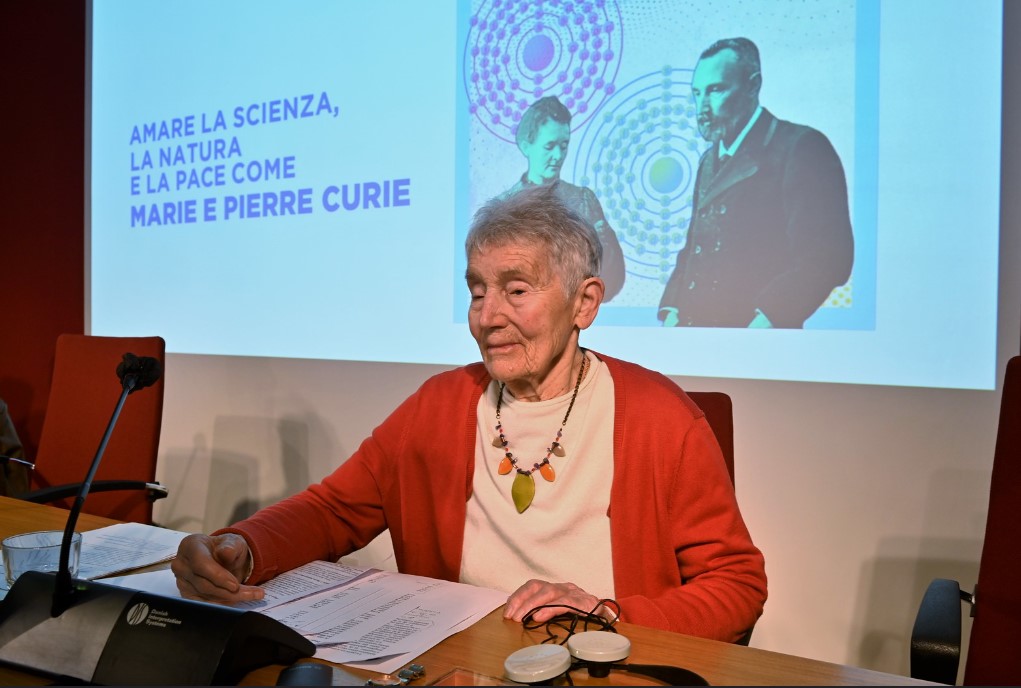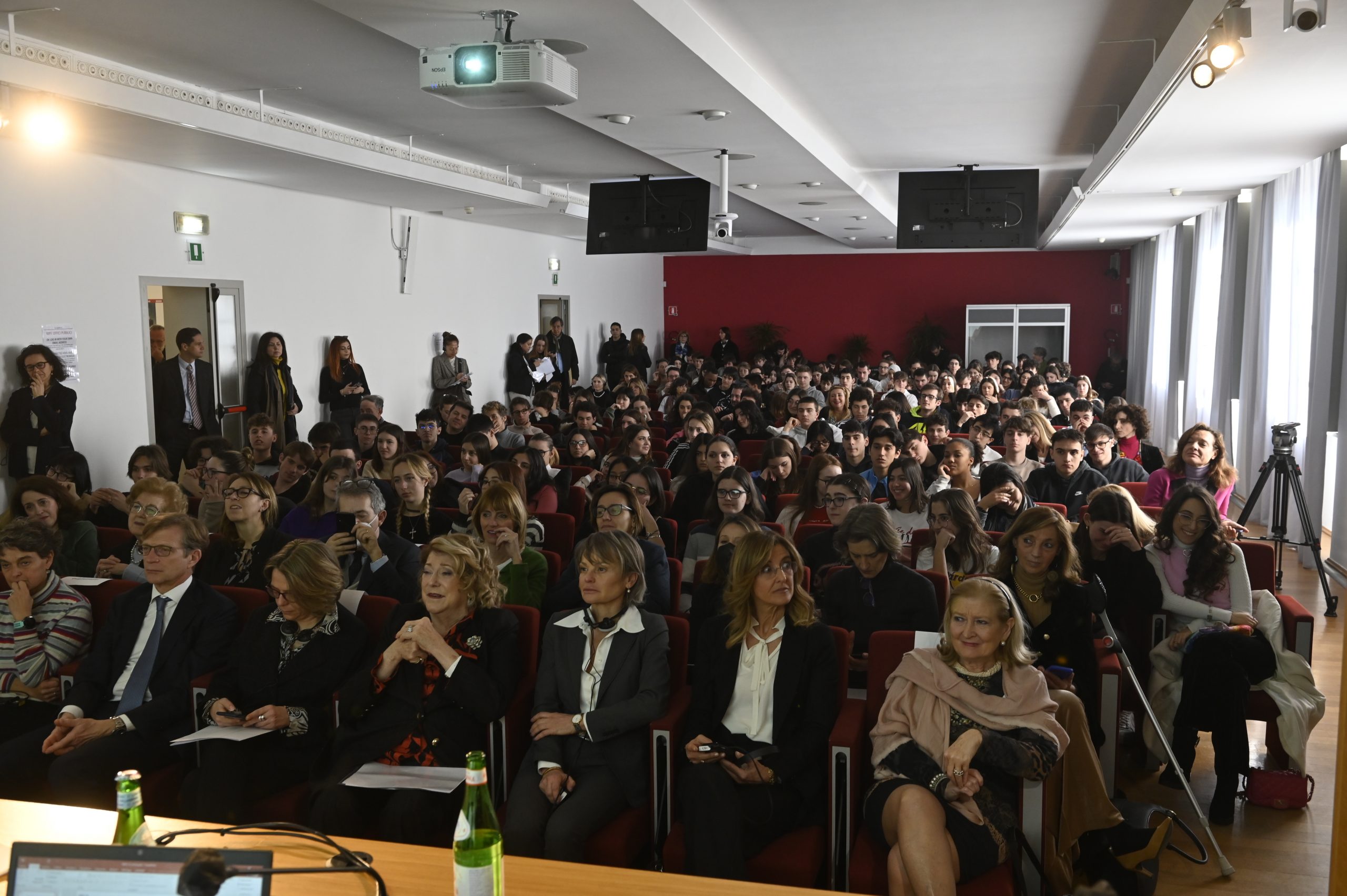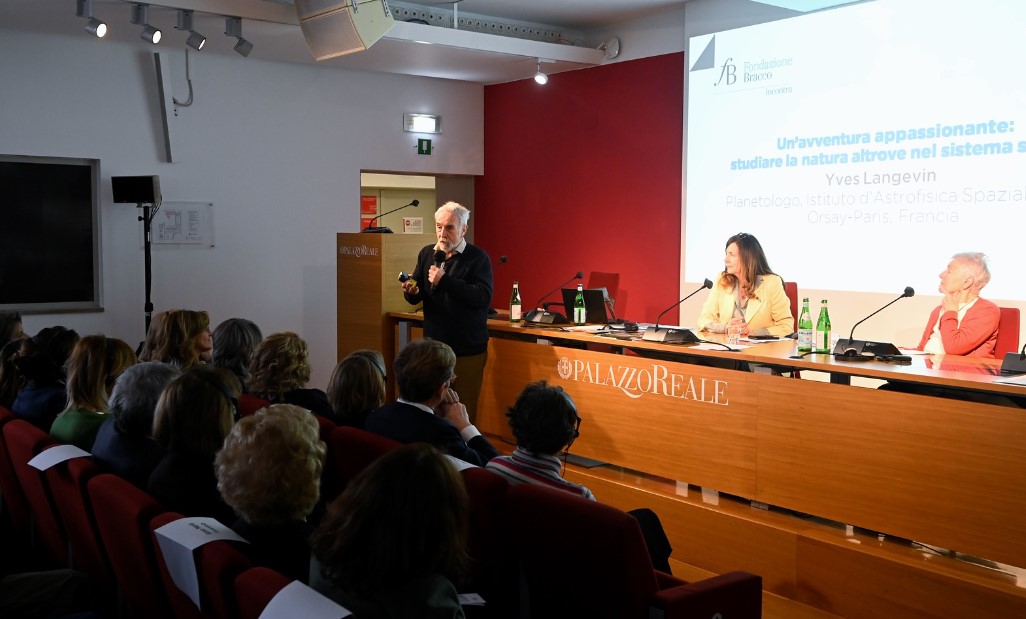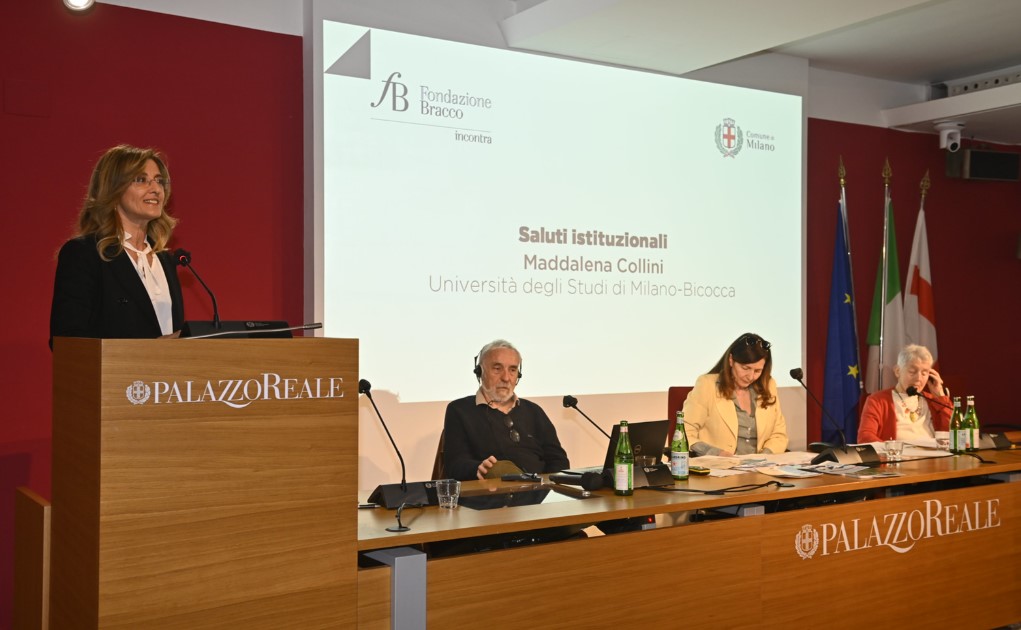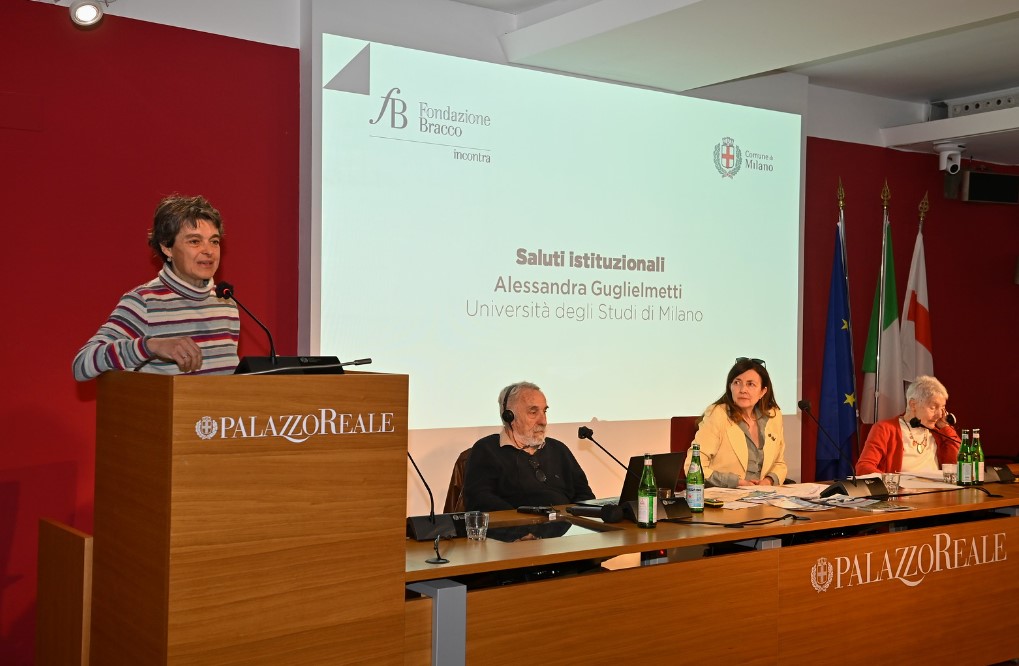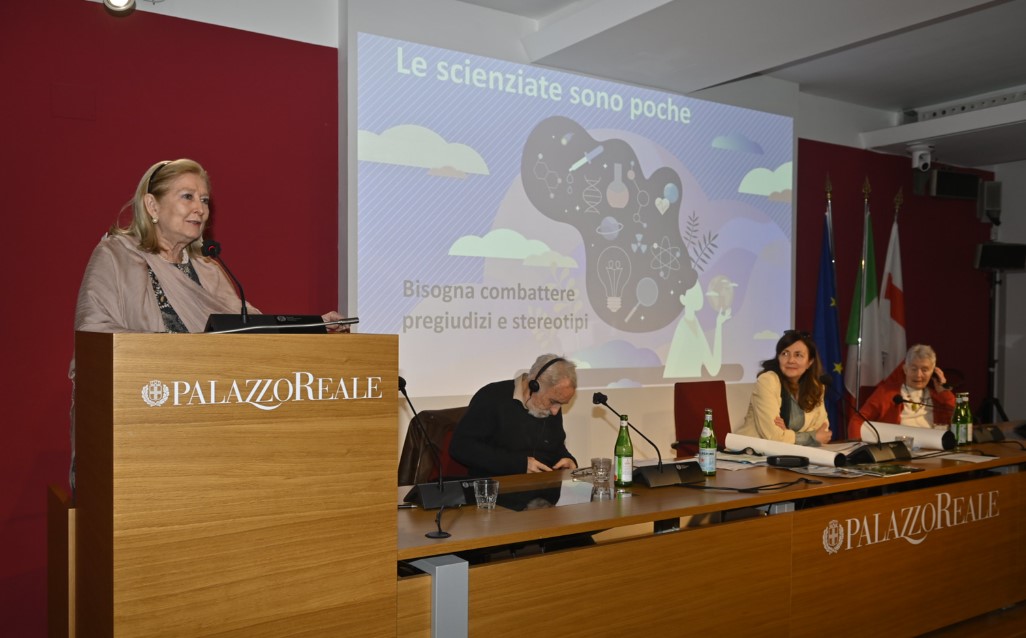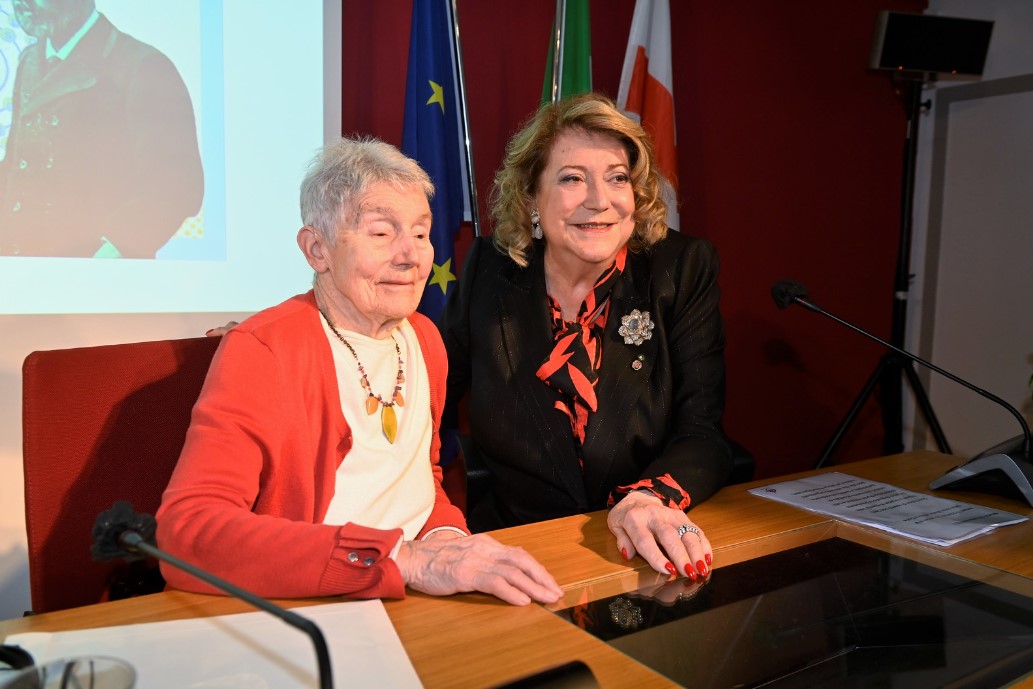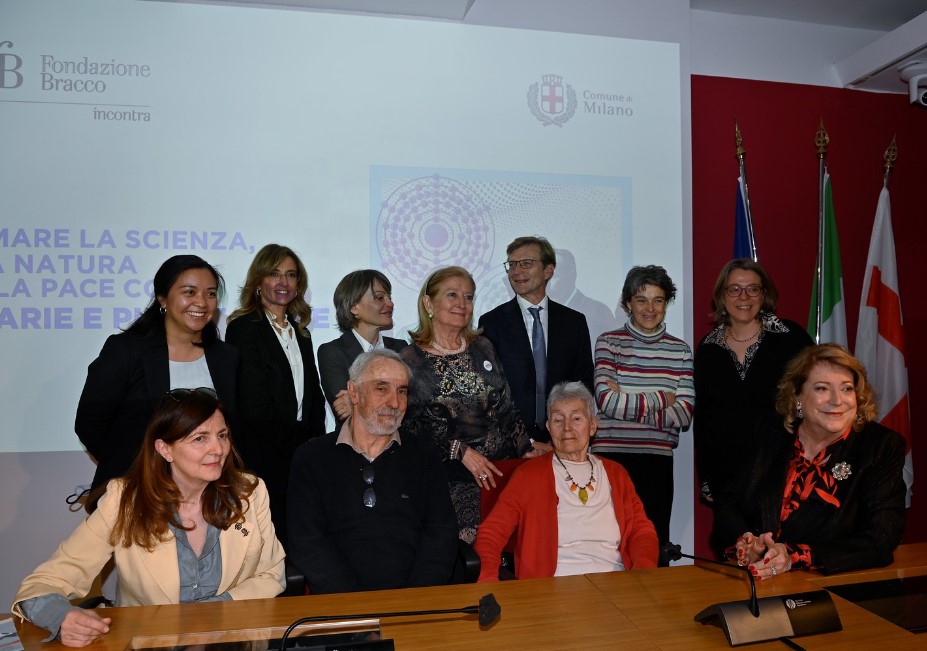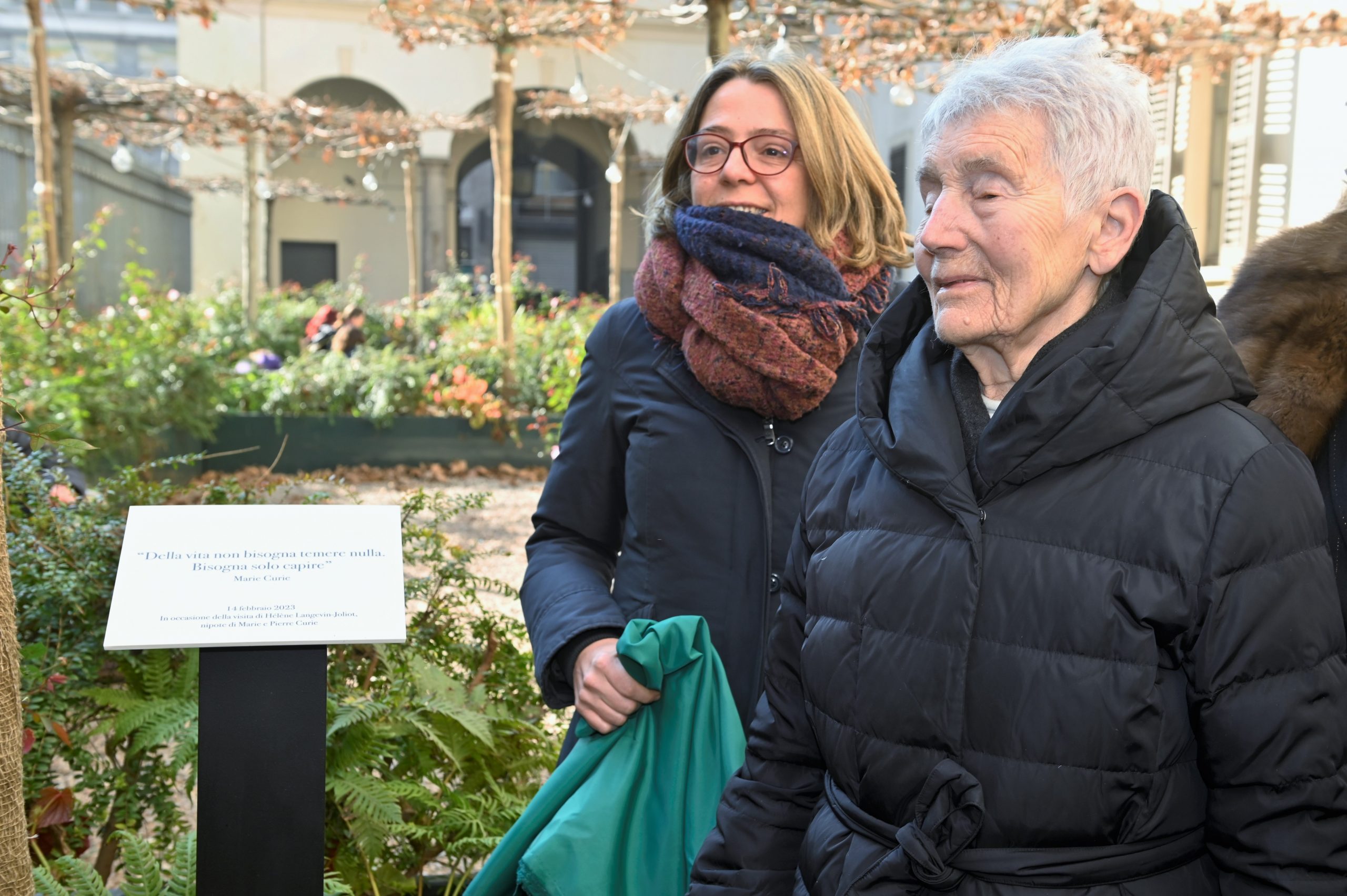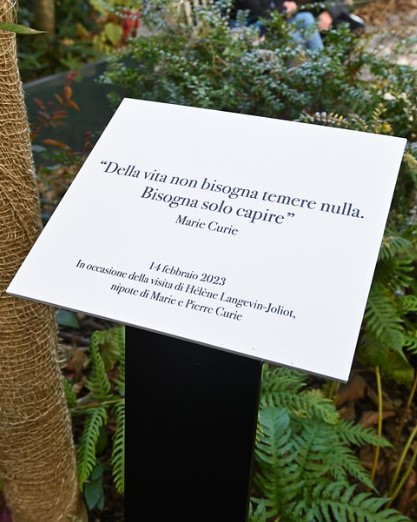Loving Science, Nature and Peace like Marie and Pierre Curie
On 14 February, a few days after the International Day of Girls and Women in Science (11 February), Palazzo Reale became the venue for ”Loving science, nature and peace like Marie and Pierre Curie,” an event with two extraordinary French guests: the physicist Hélène Langevin-Joliot and the planetologist Yves Langevin, who are, respectively, the grandson and great-grandson of Marie and Pierre Curie.
Sponsored by Fondazione Bracco [Bracco Foundation] and the City of Milan, the event is one of several organized to encourage young women as well as young men to pursue a career in the sciences. The event is also the occasion for the telling of the extraordinary history of the Bracco family and company, which is of particular ethical and social relevance for what it says of how the professional values underpinning the so-called “STEAM” subjects (Science, Technology, Engineering, Arts and Mathematics) can be practically applied.
“It seems to me that the time has come to set in place a system that encourages boys and girls to start using science laboratories, but that is also compatible with family life,” declared Helene Langevin-Joliot, granddaughter of Marie Curie. “We must press home the point that the Curie's way of doing science should be a source of inspiration not just celebration.”
Curie remains a paradigmatic example for young people, a figure who can still inspire them to take up a STEM subject, and a lodestar for those women who still find it hard to see themselves entering the sciences.
The Chair of Fondazione Bracco, Diana Bracco, underscored the point: “Never accept the prejudicial belief that women are unsuited to technical-scientific studies and related professions. Earn your place in society with confidence, courage, tenacity and generosity.”
The importance of this event was also evidenced by the presence and participation of the Consul General of France in Milan, His Excellency Monsieur François Revardeaux, and by the comments sent from Rome by the Minister of Education and Italian Merit, Giuseppe Vallettara, who wrote: “Initiatives such as today's make an important contribution to educational and vocational guidance; for if we are to make informed choices for the future, we must be able to refer to models of virtue such as these. There has to be an increase in the number of women in STEM careers, and there must be an end to obsolete stereotypes.”
The event, moderated by Paola Antolini, anthropologist at the United Nations International University of Peace, also heard from: Yves Langevin, planetologist at Institut d’Astrophysique Spatial (IAS), Orsay-Paris, France; Alessandra Guglielmetti, Università degli Studi di Milano; Madeleine Collini, Università degli Studi di Milano-Bicocca and Patricia Caraveo, astrophysicist, participant in a programme involving a 100-strong team of women with STEM expertise (“#100esperte STEM”), and Director of Research at Istituto Nazionale di Astrofisica (INAF - the National Institute of Astrophysics).
Attending the meeting were 180 4th- and 5th-year students from Liceo (high school) Manzoni, Gonzaga College, and Liceo scientifico Marconi. It was also live streamed to more than 1,500 students and researchers from all over Italy.
Afterwards a bush of “Marie Curie” roses (by Orticola) was planted in the courtyard of Palazzo Reale, and a commemorative plaque laid.
MEDIA GALLERY





